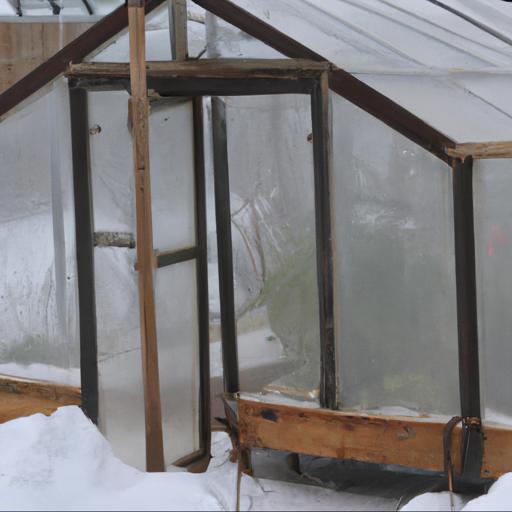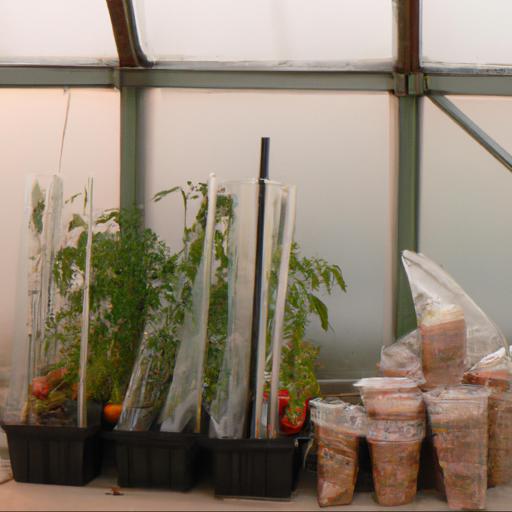Are you looking for ways to keep busy this winter? A winter greenhouse can be a great way to stay productive and get creative.
With seven projects for a winter greenhouse, you can make the most of your indoor gardening space and enjoy the benefits of growing even in the colder months. From propagating plants to creating a winter oasis, these projects will help you make the most of your winter greenhouse and give you something to look forward to in the cold winter months.
Benefits of building a winter greenhouse

As a UK garden expert, I am often asked about the seven projects that can help build a winter greenhouse and the benefits it can bring. The truth is, winter greenhouses can do a lot more than just provide shelter in cold months; they can be utilized to help keep plants and herbs in a healthy condition throughout the year and also assist with experimenting in gardening and growing.
Not to mention the additional bonus of being able to produce your own food at home and be self-sufficient. There are seven essential winter greenhouse construction projects that you can use to benefit your winter greenhouse. Firstly, ensure that you have a sturdy foundation.
Secondly, given the winter weather, choose the right type of glazing and insulation for your structure. Thirdly, ensure that you have adequate airflow through your greenhouse without compromising the warmth. Fourthly, think about your winter plants and make sure you have an efficient, cost-effective lighting system.
Fifthly, create adequate space for your plants to grow and thrive. Sixthly, pay attention to your heating system and select the appropriate one for your environment and budget.
And finally, don’t forget to maintain your greenhouse in the winter months, as water damage and cracking can occur if proper care is not taken. These projects, when implemented correctly, will enable you to employ your winter greenhouse to the fullest potential.
It can be an organic grower’s paradise, allowing you to grow food, herbs, and flowers all year round with the possibility to experiment with new plant varieties and grow in new ways. Not only this, but it will give you the assurance that your plants are kept safe and sound during the winter months and that no uninvited guests will be making their way into your greenhouse. Overall, building a winter greenhouse is a great way for keen and experienced gardeners to ensure their plants survive and even prosper during the winter months, as well as to create a self-sufficient growing system for those interested in producing their own food.
Seven projects for a winter greenhouse

A winter greenhouse can be a magical addition to your garden, providing a haven of lush greenery and tropical warmth amidst the cold winter weather. With careful planning and a bit of creativity, you can get the most out of your winter greenhouse by adding some special projects.
Here are seven projects to consider if you’re looking to spruce up your greenhouse. Project one is to install an automated temperature and humidification system. By using an all-in-one climate control unit, you can keep your greenhouse at the perfect temperature and humidity level for all your plants.
This automated system is ideal for busy gardeners who don’t have time to keep up with the daily maintenance of their greenhouse. Project two is to add a heating system. During the coldest winter days, it’s essential to keep your greenhouse warm enough for your plants to thrive.
With a combination of heat lamps, insulation, and self-regulating heaters, you can create an efficient and comfortable environment for your plants. Project three is to get creative with lights.
If you have an outdoor winter greenhouse, you can use a variety of lighting options to create a visually pleasing and visually stimulating space. This can include strategically placed floor lamps, wall lamps, and hanging lights.
If you want to add some more vibrant colors and textures to the space, consider using LED lights that come in a variety of colors and patterns. Project four is to invest in a good ventilation system. During the winter months, your greenhouse can become a breeding ground for mold and other disease-causing bacteria.
Make sure you invest in a good ventilation system that will help circulate the air and keep the greenhouse dry and healthy. Project five is to make the most of the space. You’d have a lot of room to get creative and make the most of the space. You can grow multiple crops and use trellis and hanging pots for vertical space-saving. If you’re into hydroponics, you can also install a system to give your plants the nourishment they need. Project six is to install a watering system. If you’re looking for a way to maintain the moisture in your greenhouse without having to water your plants constantly, you can use a combination of automatic sensors and special hoses to get the job done. Project seven is to add some plants that thrive in winter. You’d have to be careful since some plants may not survive in a winter greenhouse because of the cold temperatures. But if you choose the right varieties, you can add some specific plants that can withstand the lower humidity and temperatures, such as succulents, wildflowers, ferns, and select vegetables. By installing the right components, having the right balance of plants, and doing some creative work with the space and lighting, you can make your winter greenhouse a place to relax, to entertain, and to grow beautiful plants to enjoy. With the right combination of projects, your winter greenhouse can become a stunning feature in your garden.
Tips for building a winter greenhouse

Welcome gardeners! Have you ever wanted to have a winter greenhouse but didn’t know where to start?
Whether you’re an experienced green thumb or just getting started, these seven projects for a winter greenhouse are the ideal way to give your garden the winter boost it needs. First, if you’re looking for an easy and effective project to start with, consider constructing a mini-greenhouse. This is an easy DIY project that requires minimal materials and time for an effective, budget-friendly outcome.
Begin by building a frame out of 2x4s and PVC pipe, and then covering it with a plastic sheet, greenhouse fabric, or recycled plastic bottles. Easy and affordable, your mini-greenhouse will be the perfect solution for seedlings, herbs, and young plants struggling to survive the cold. To protect the plants in your greenhouse from cold damage, it’s important to insulate it properly.
A great way to do that is by installing a layer of bubble wrap around the inside of the structure. Bubble wrap is both lightweight and waterproof, so it provides an effective insulation layer for your plants.
Even easier to install is greenhouse plastic, which does the same job, but with an added bonus of increased air circulation throughout your greenhouse. For those looking to make the most out of their winter greenhouse, look no further than a hydroponic system.
Hydroponics involves growing plants without the use of soil, using a nutrient-rich water solution in which the plants are directly fed. This system is popular in greenhouses, as it makes it possible to grow water-heavy plants and vegetables in winter conditions, saving space, labor, and cost. These are just a few of the seven projects for a winter greenhouse that you should consider in your pursuit of a thriving, blooming garden this winter.
With these simple steps and materials, you’ll have your winter greenhouse setup in no time. So don’t wait any longer, start building today and get ready to enjoy all the winter garden glory in style and comfort.
Bottom Line
This article provides seven projects for a winter greenhouse. From planting winter vegetables to creating a cozy place for friends to gather, these projects are sure to make your greenhouse a great place to spend time during the colder months. With a few simple supplies and some creativity, you can transform your greenhouse into a winter wonderland.
FAQ
What are the benefits of having a winter greenhouse?
The benefits of having a winter greenhouse include extended growing seasons, protection from extreme weather conditions, increased crop yields, and improved air quality. Additionally, a winter greenhouse can provide a warm and inviting space for relaxation and enjoyment.
What types of plants can be grown in a winter greenhouse?
Some types of plants that can be grown in a winter greenhouse include leafy greens, root vegetables, herbs, and flowering plants.
What materials are needed to build a winter greenhouse?
Materials needed to build a winter greenhouse include a frame, polyethylene sheeting, insulation, a heater, and a ventilation system.
What are the best practices for maintaining a winter greenhouse?
The best practices for maintaining a winter greenhouse include: providing adequate ventilation, using a heating system to keep temperatures above freezing, using a fan to circulate air, using a dehumidifier to reduce humidity, and using a shade cloth to protect plants from direct sunlight. Additionally, it is important to keep the greenhouse clean and free of pests, and to regularly inspect and maintain the structure.
How much space is required for a winter greenhouse?
The amount of space required for a winter greenhouse depends on the size of the greenhouse and the type of plants being grown. Generally, a minimum of 10-20 square feet per plant is recommended.
What are the costs associated with building and maintaining a winter greenhouse?
The costs associated with building and maintaining a winter greenhouse include the cost of materials for construction, heating and cooling systems, insulation, ventilation, and lighting. Additionally, costs associated with regular maintenance, such as cleaning and replacing broken parts, must also be considered.
What are the most common challenges associated with growing plants in a winter greenhouse?
The most common challenges associated with growing plants in a winter greenhouse are maintaining adequate temperatures, providing adequate light, and managing humidity levels. Additionally, pests and diseases can be more difficult to control in a greenhouse environment.

